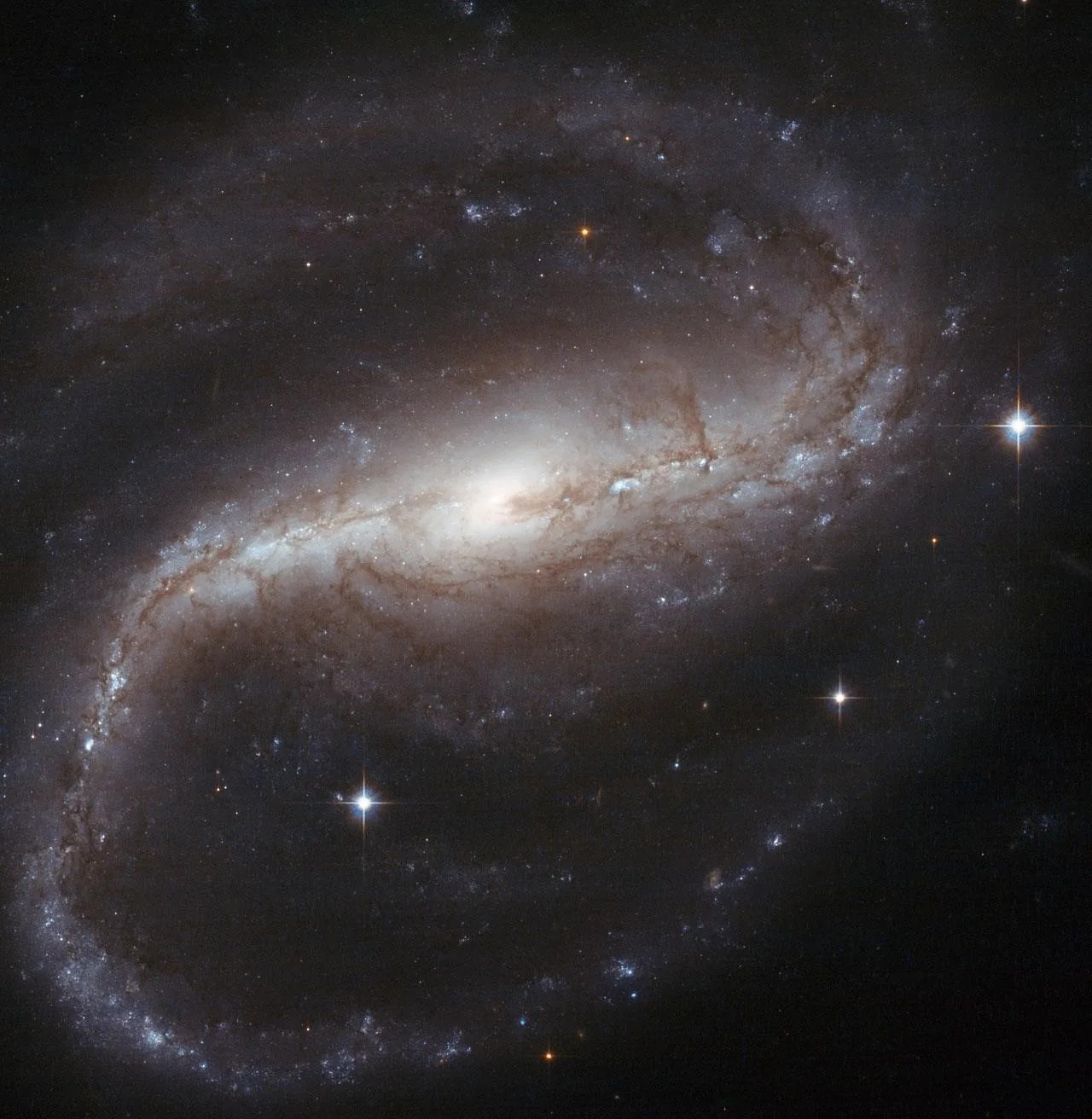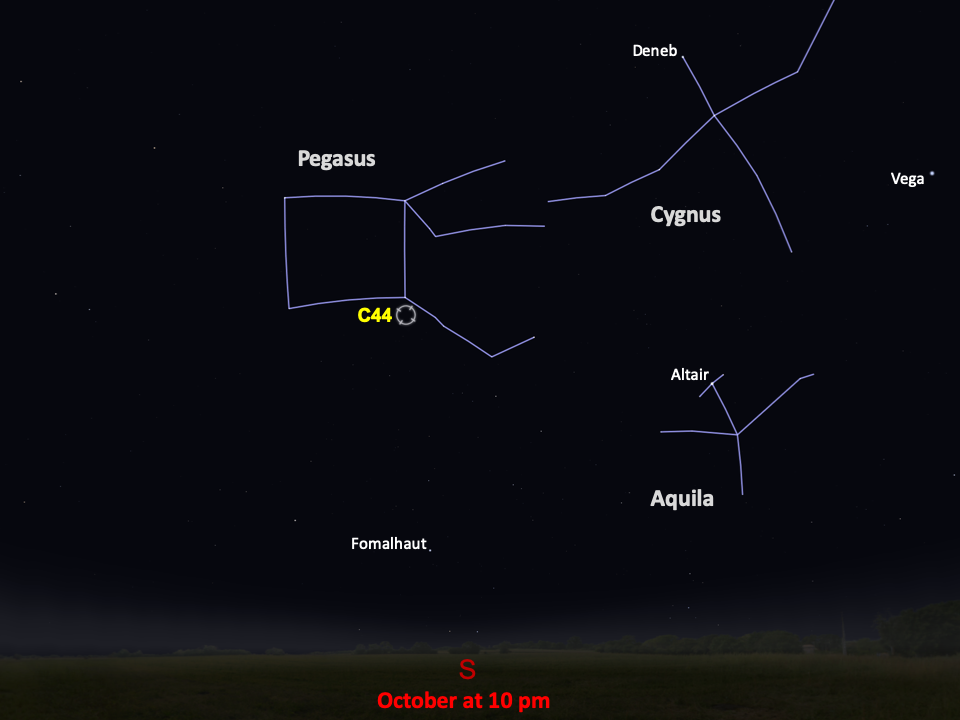Caldwell 44
Shaped like a backward "S," Caldwell 44 is visible in autumn from the Northern Hemisphere and in spring from the Southern Hemisphere.
Distance
110 million light-years
Apparent Magnitude
10.8
constellation
Pegasus
object type
Barred Spiral Galaxy

In this Hubble image of Caldwell 44, also known as NGC 7479, the tightly wound arms of the barred spiral galaxy create a backward "S" as they spin in a counter-clockwise direction. However, this galaxy, nicknamed the Propeller galaxy, emits a jet of radiation in radio wavelengths that bends in the opposite direction to the stars and dust in the arms of the galaxy. Astronomers think that the radio jet was put into its bizarre backward spin after the Propeller galaxy merged with another galaxy.
The Propeller galaxy is an interesting subject for several other reasons as well. Hidden within the galaxy’s core lurks a supermassive black hole that feeds on large quantities of gas. The galaxy has also been the home to two recent supernovae, one witnessed in 1990 and the other in 2009. Supernova explosions blast stellar material back into the cosmos to be used in subsequent generations of stars. The Propeller galaxy is making rapid use of this recycled material as it undergoes starburst activity, with many bright, young stars peeking out of the spiral arms and disk. The three brightest stars in this image, however, are foreground stars — caught on camera because they lie between us and the galaxy.
This image was taken in visible and infrared light with Hubble’s Advanced Camera for Surveys. The observations were taken to study the galaxy’s most recent supernova, SN 2009jf. Astronomers have also used Hubble to investigate star formation in Caldwell 44.
Discovered by astronomer William Herschel in 1784, the Propeller galaxy can be found in the constellation Pegasus. However, at a distance of 110 million light-years from Earth, this magnitude-10.8 galaxy is hidden from the naked eye. Use a medium to large telescope to look for Caldwell 44 in autumn night skies from the Northern Hemisphere, or in spring skies from the Southern Hemisphere.
For more information about Hubble’s observations of Caldwell 44, see:
Spiral Spins Both Ways

Glossary
Magnitude - The brightness of an astronomical object, represented by a number; bright objects have low numbers on the magnitude scale, while dim objects have high numbers.
Spiral Galaxy - A galaxy characterized by its spiral structure, with star-filled arms that extend out from the center of the galaxy and host regions of star formation.
Supermassive Black Hole - A black hole millions or billions of times more massive than the Sun, typically residing at the center of a large galaxy.
Supernova - The explosion of a massive star at the end its life, which ejects material into space and causes the star to temporarily brighten in our sky.
Explore Hubble's Caldwell Catalog
The following pages contain some of Hubble’s best images of Caldwell objects.

Caldwell 1
Also known as NGC 188, this group of stars formed from a large cloud of gas making the stars roughly…

Caldwell 2
This shell of gas is expanding outward, away from the dying star within.

Caldwell 3
This barred spiral galaxy was first spotted by British astronomer William Herschel in April 1793 in the constellation Draco.




